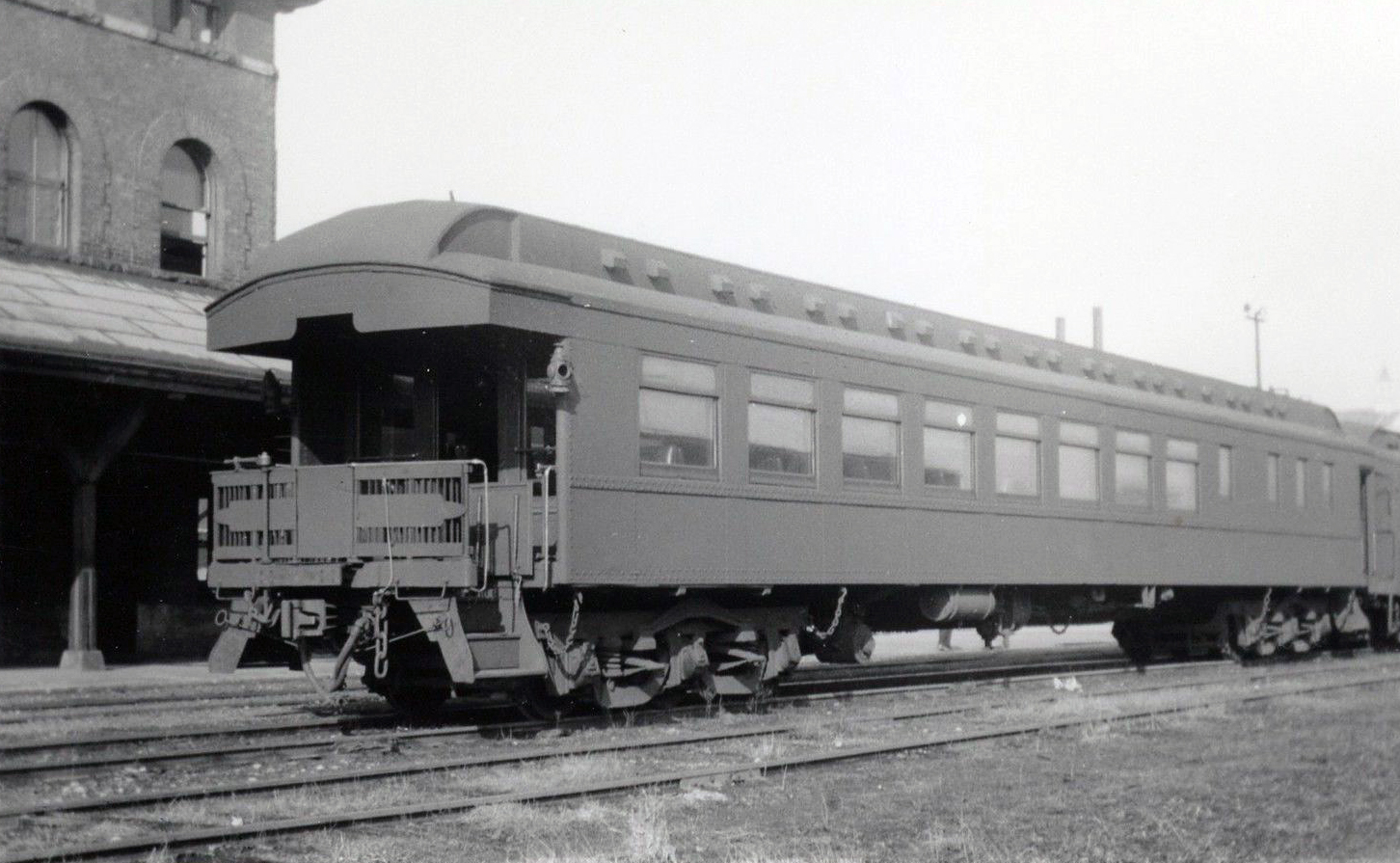- Home ›
- Passenger Cars ›
- Coach
Coach Cars (Trains): Pictures, Meaning, History
Last revised: August 29, 2024
By: Adam Burns
Standard coach cars offered the most basic of amenities on board passenger trains, even during the streamliner era. Their purpose was quite straightforward, to provide basic [and in later years] and comfortable seating for passengers. Coach cars were the earliest passenger train cars, dating back to the late 1820s and 1830s.
The original designs were simply based from the era's stagecoaches. As John White Jr. notes in his authoritative title, "The American Railroad Passenger Car (Part I)," there were three basic types at this time (which rode on two simple axles):
- Curve-sided stagecoach
- Compartment style with three separate bodies comprising a single unit
- "Gothic" cars
Having no center isle or protection from the outside elements, aside from a roof, they were rudimentary at best and dangerous because they offered no protection from the early locomotives of the day which were severely prone to boiler explosions.
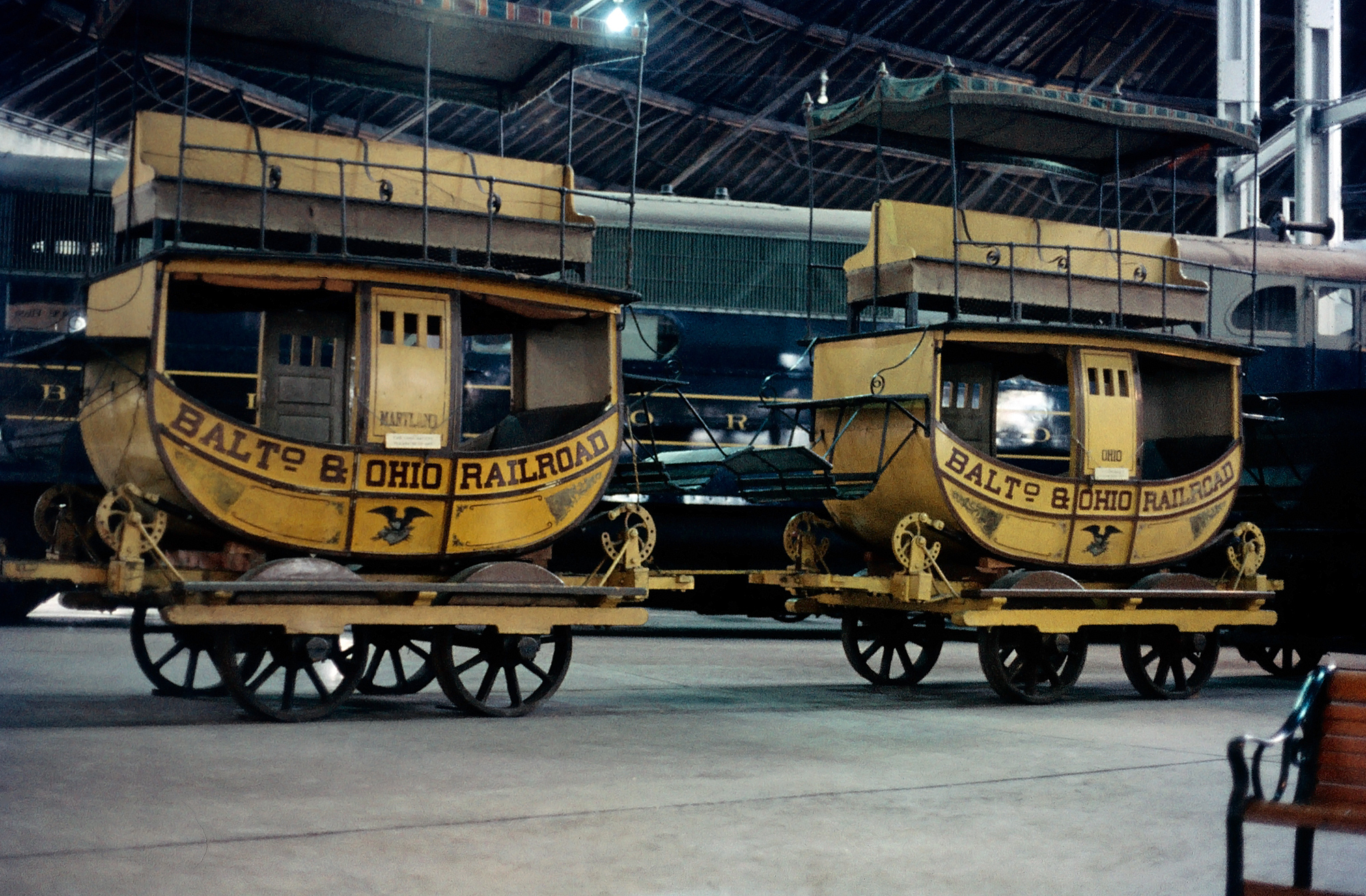 Replicas of Baltimore & Ohio's original passenger carriage coaches, "Ohio" and "Maryland," built for the 'Fair Of The Iron Horse' (1927) are seen here on display at the B&O Railroad Museum during the spring of 1973. The cars remain here today. The original six were built by Richard Imlay in 1830 for the B&O's inaugural passenger service from Baltimore to Ellicott Mills. Imlay based his design from turnpike stagecoaches of that era. American-Rails.com collection.
Replicas of Baltimore & Ohio's original passenger carriage coaches, "Ohio" and "Maryland," built for the 'Fair Of The Iron Horse' (1927) are seen here on display at the B&O Railroad Museum during the spring of 1973. The cars remain here today. The original six were built by Richard Imlay in 1830 for the B&O's inaugural passenger service from Baltimore to Ellicott Mills. Imlay based his design from turnpike stagecoaches of that era. American-Rails.com collection.A Brief History
As car design and construction improved so, too, did the ride quality and seating coaches provided.
Still, even during the final years of privatized passenger rail travel many railroads continued to rely on standard, early 20th-century coaches that were not particularly comfortable.
Today, coach services on Amtrak and commuter lines is generally quite good.
By the mid-19th century the standard coach, as we know it today with a center isle and seating to either side, came into being.
Standard forward bench seating in coach cars with a central aisle was the primary design feature for nearly a century. The layout of this coach type, known as an "Open" design, was designated by the number of seats and aisles it contained.
For instance, if the car held two seats along a central aisle it was known as a "2+2" while three seats is known as a "3+3". It was not until the streamliner era of the mid-1930s did the coach evolve.
Around this time coach cars became more diversified featuring individual, more comfortable seats (which sometimes swiveled, such as in the case of the Southern Railway).
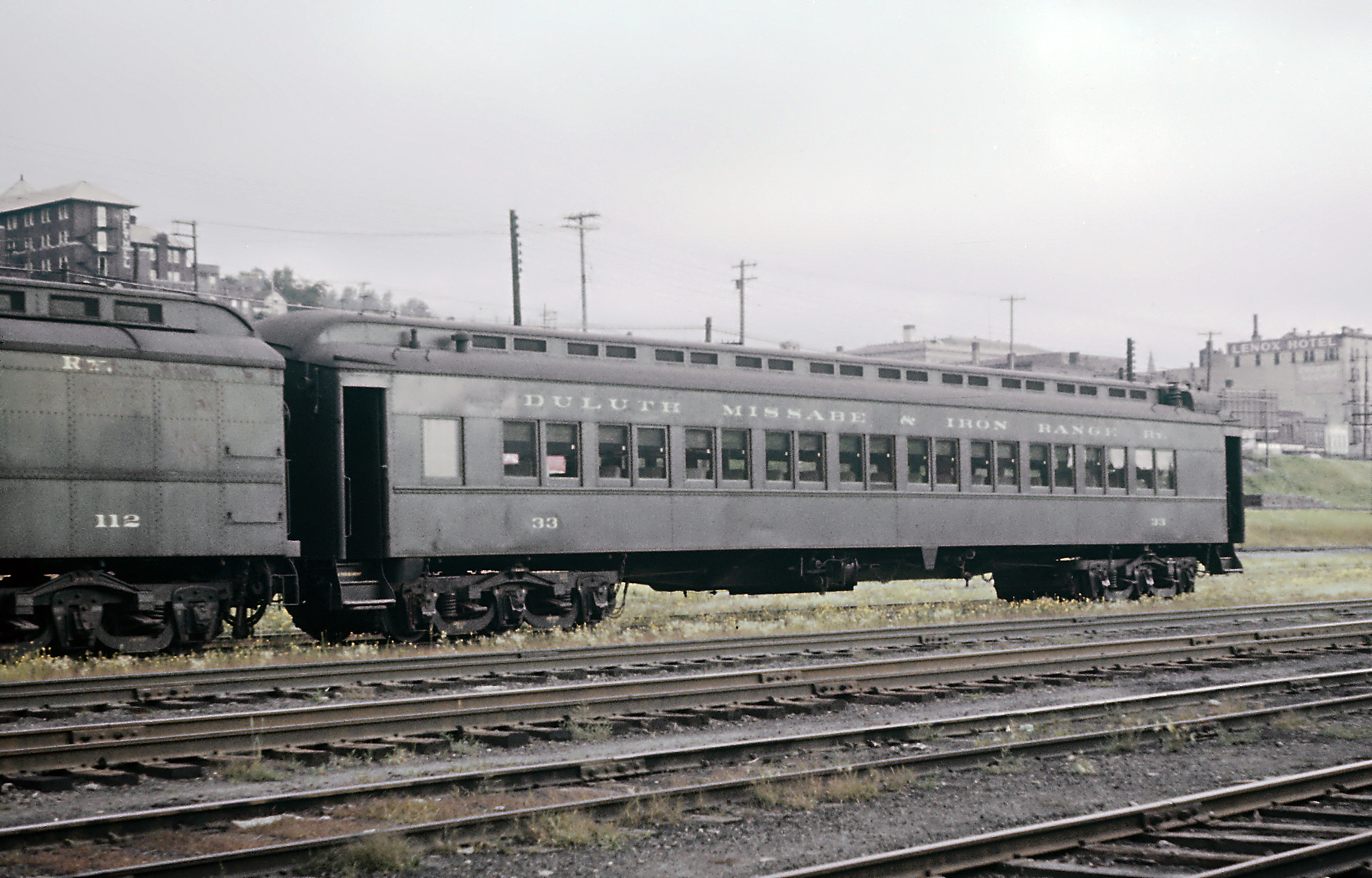 The clerestory-roof, heavyweight coach remained common throughout the passenger era. Seen here is Duluth, Missabe & Iron Range #33 in Duluth, Minnesota during September, 1962. Roger Puta photo.
The clerestory-roof, heavyweight coach remained common throughout the passenger era. Seen here is Duluth, Missabe & Iron Range #33 in Duluth, Minnesota during September, 1962. Roger Puta photo.Development
Also developed during the era was the compartment coach, which featured individual, sectioned seating areas (usually two seats facing one another) with a corridor walkway located along one side of the car.
All of the cars featured vestibules, or the hallway area along the end of the car where a passenger first came on board.
These newly designed coach cars also featured overhead storage compartments so passengers could carry some of their luggage with them on the train.
The streamliner era in general saw the most advances in passenger train car construction, not just coach cars, as company's spared no expensive to get in edge in wooing passengers to their trains.
Comfort, relaxation, and stunning interior and exterior designs became the norm for a railroad's most prominent passenger train(s).
Modern Designs
These amazing trains during the 1930 to 1950 era are commonly remembered as the "Golden Age" of passenger railroad travel with sleek streamlined equipment and a round-ended observation car on the rear to complete the look.
Many of these cars were built by the most famous names in passenger train car manufacturing such as Pullman-Standard and the Budd Company.
After the private railroads abandoned passenger trains giving way to Amtrak the national carrier continued to use second-hand equipment for years until the arrival of newer designs like Amfleets and Superliners.
Today, Amtrak's coaches usually come in either an open or compartment setup and feature comfortable individual seats for passengers.
Usually one can also now connect to the Internet or use portable electronic equipment with on board plug-ins and Wi-Fi access.
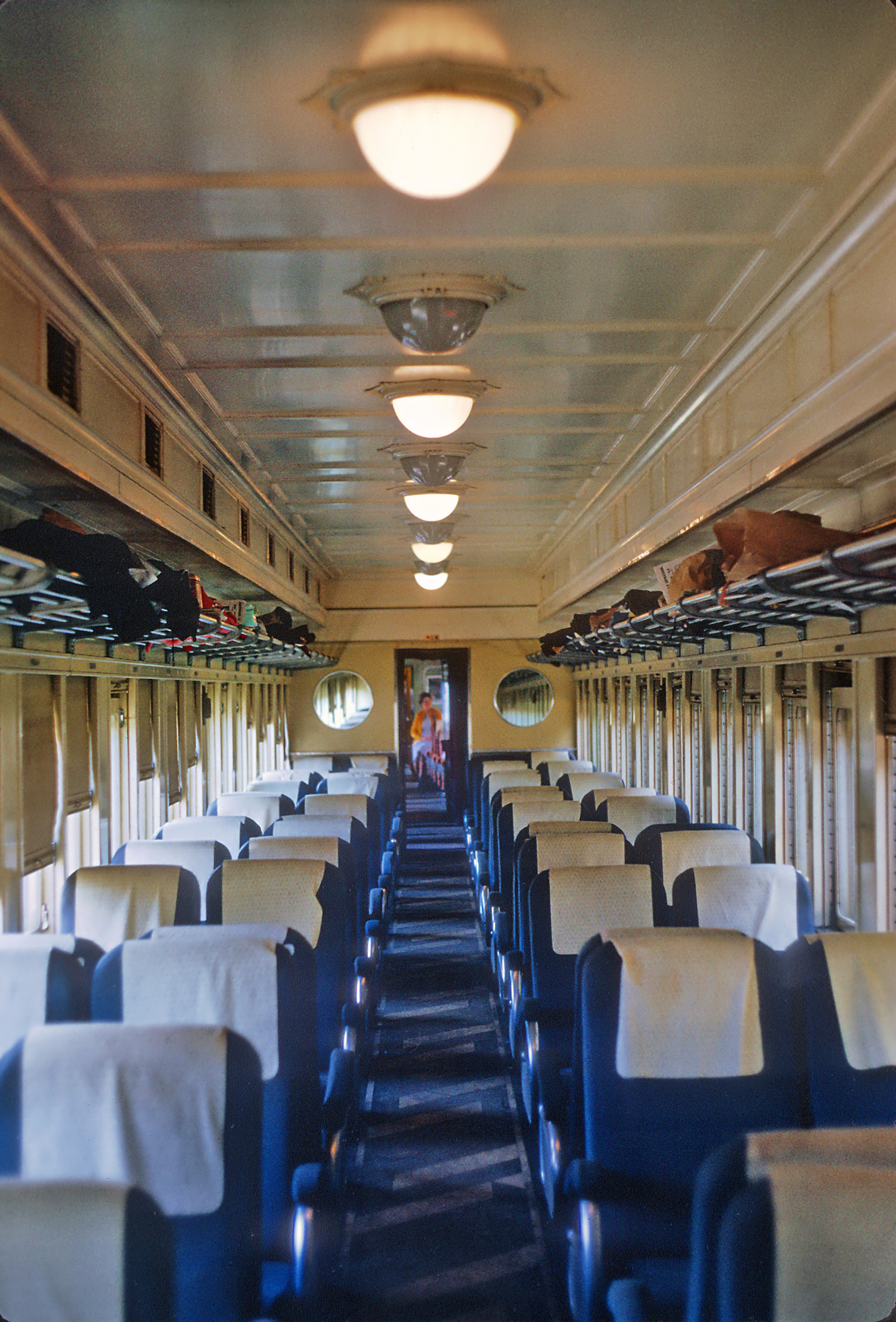 An interior view of Baltimore & Ohio heavyweight coach #3589 (ex-#5436), a 60-seat car, hosting a Chesapeake & Ohio NRHS fan trip at Clifton Forge, Virginia on October 26, 1969. Roger Puta photo.
An interior view of Baltimore & Ohio heavyweight coach #3589 (ex-#5436), a 60-seat car, hosting a Chesapeake & Ohio NRHS fan trip at Clifton Forge, Virginia on October 26, 1969. Roger Puta photo.Today, the old standard bench seats found on heavyweight coaches have long since been relegated to history.
However, you can still ride aboard a train equipped with them by taking one of the many tourist/excursion trains found across the country.
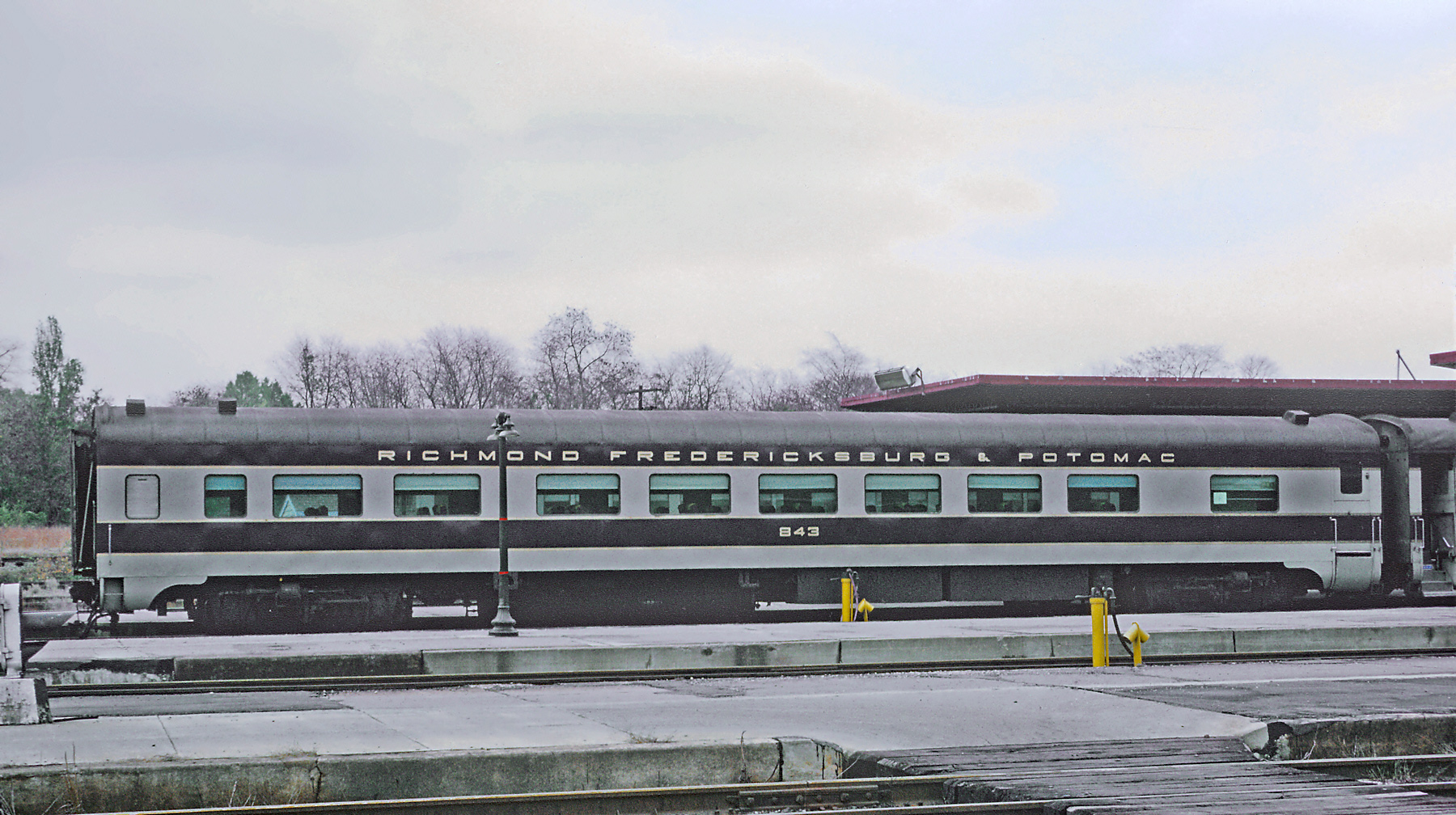 Richmond Fredricksburg & Potomac coach #843, a lightweight design manufactured by American Car & Foundry, is seen here in Richmond, Virginia on November 16, 1968. Roger Puta photo.
Richmond Fredricksburg & Potomac coach #843, a lightweight design manufactured by American Car & Foundry, is seen here in Richmond, Virginia on November 16, 1968. Roger Puta photo.Perhaps the most finely preserved and equipped railroad to operate these old cars is the Strasburg Railroad in Pennsylvania.
Likewise, many of the famous streamlined coaches are also gone, although you can also still find on tourist lines as well, including some of the more plush operations such as the Grand Canyon Railway and Napa Valley Wine Train.
Recent Articles
-
Wisconsin Dinner Train Rides In North Freedom!
Jan 06, 26 10:18 PM
Featured here is a practical guide to Mid-Continent’s dining train concept—what the experience is like, the kinds of menus the museum has offered, and what to expect when you book. -
Pennsylvania Dinner Train Rides In Boyertown!
Jan 06, 26 06:48 PM
With beautifully restored vintage equipment, carefully curated menus, and theatrical storytelling woven into each trip, the Colebrookdale Railroad offers far more than a simple meal on rails. -
North Carolina ~ Murder Mystery ~ Dinner Train Ride
Jan 06, 26 11:26 AM
While there are currently no murder mystery dinner trains in the Tarheel State the Burgaw Depot does host a murder mystery dinner experience in September! -
Florida's - Murder Mystery - Dinner Train Rides
Jan 06, 26 11:23 AM
Florida, known for its vibrant culture, dazzling beaches, and thrilling theme parks, also offers a unique blend of mystery and fine dining aboard its murder mystery dinner trains. -
New Mexico's - Wine Tasting - Train Rides
Jan 06, 26 11:19 AM
For oenophiles and adventure seekers alike, wine tasting train rides in New Mexico provide a unique opportunity to explore the region's vineyards in comfort and style. -
Ohio's - Wine Tasting - Train Rides
Jan 06, 26 11:14 AM
Among the intriguing ways to experience Ohio's splendor is aboard the wine tasting trains that journey through some of Ohio's most picturesque vineyards and wineries. -
Connecticut's Thomas The Train Rides
Jan 06, 26 11:06 AM
For 2026, the tour stop at Essex brings Thomas (and Percy, too) to the historic Valley Railroad for a full day of events for the kids. -
Maryland's Thomas The Train Rides
Jan 06, 26 11:00 AM
In 2026, the B&O Railroad Museum in Baltimore welcomes the Let’s Rock, Let’s Roll Tour with four event days that combine a Thomas-themed excursion with other activities. -
Tennessee's Thomas The Train Rides
Jan 06, 26 10:51 AM
Set on the grounds of one of the Southeast’s best-known operating railroad museums, the Thomas the train event blends kid-friendly fun with the unmistakable sights, sounds, and atmosphere of a real wo… -
Georgia's Thomas The Train Rides
Jan 06, 26 10:44 AM
Day Out With Thomas is set to roll back into Cordele in 2026, bringing Thomas the Tank Engine and a full family festival to the SAM Shortline at Georgia Veterans Memorial State Park. -
Staten Island Rapid Transit
Jan 06, 26 10:02 AM
The Staten Island Rapid Transit has long served Staten Island since the 19th century and today is known as the Staten Island Railway. -
New York Dinner Train Rides In The Adirondacks!
Jan 05, 26 09:45 PM
Operating over a restored segment of the former New York Central’s Adirondack Division, the Adirondack Railroad has steadily rebuilt both track and public interest in passenger rail across the region. -
Ohio Dinner Train Rides On The CVSR!
Jan 05, 26 08:32 PM
While the railroad is well known for daytime sightseeing and seasonal events, one of its most memorable offerings is its evening dining program—an experience that blends vintage passenger-car ambience… -
Pennsylvania's - Wine Tasting - Train Rides
Jan 05, 26 01:08 PM
Wine tasting trains are a unique and enchanting way to explore the state’s burgeoning wine scene while enjoying a leisurely ride through picturesque landscapes. -
West Virginia - Wine Tasting - Train Rides
Jan 05, 26 01:02 PM
West Virginia, often celebrated for its breathtaking landscapes and rich history, offers visitors a unique way to explore its rolling hills and picturesque vineyards: wine tasting trains. -
Virginia - Wine Tasting - Train Rides
Jan 05, 26 12:58 PM
Wine tasting trains in Virginia provide just that—a unique experience that marries the romance of rail travel with the sensory delights of wine exploration. -
Utah - Wine Tasting - Train Rides
Jan 05, 26 12:37 PM
Utah, a state widely celebrated for its breathtaking natural beauty and dramatic landscapes, is also gaining recognition for an unexpected yet delightful experience: wine tasting trains. -
Kentucky Valentine's Train Rides
Jan 05, 26 12:31 PM
If you’re looking for a date night that feels a little more cinematic than the usual reservation-and-a-movie routine, Bardstown’s My Old Kentucky Dinner Train delivers the kind of evening you remember… -
Pennsylvania Valentine's Train Rides
Jan 05, 26 12:12 PM
Tucked amid the rolling farmland of Lancaster County, Pennsylvania, the Strasburg Rail Road stands as one of the most celebrated and successful heritage railroads in North America. -
New York's - Murder Mystery - Dinner Train Rides
Jan 05, 26 11:01 AM
New York State, renowned for its vibrant cities and verdant countryside, offers a plethora of activities for locals and tourists alike, including murder mystery train rides!

